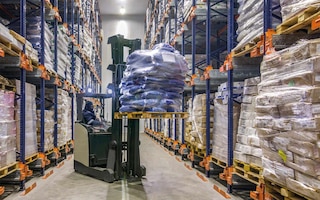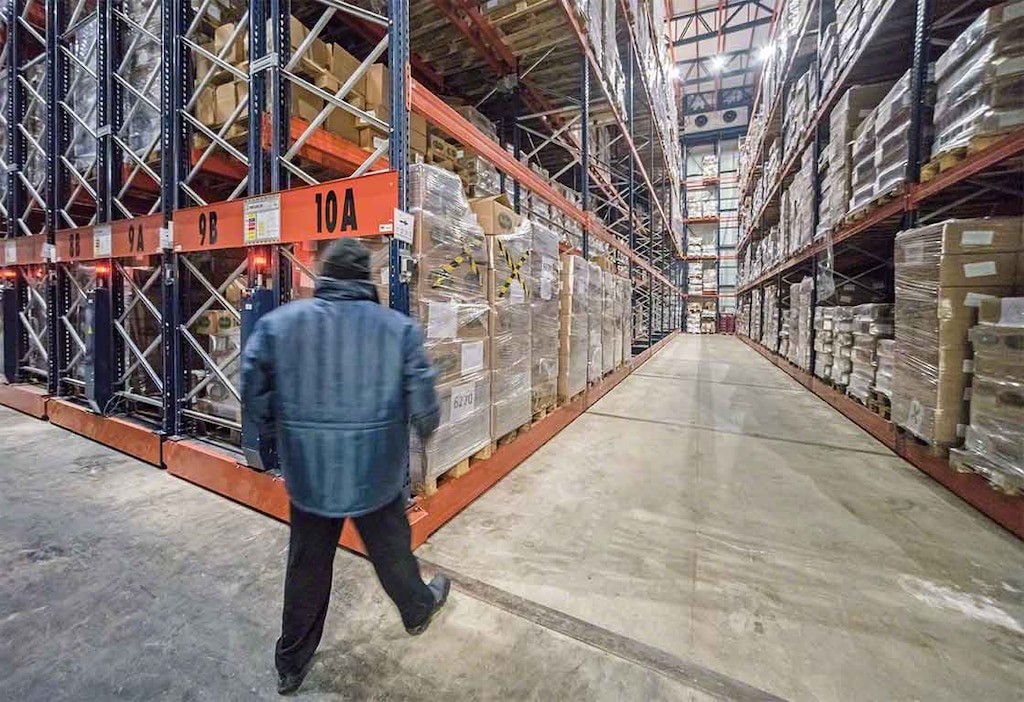
Cold chain: never break the chain
Cold chain logistics manages highly sensitive goods — perishable products that, in uncontrolled conditions, could give rise to a health alert.
This presents companies working in the cold chain with a twofold challenge: to meet the requirements of Logistics 4.0 in addition to those of their sector. In our article, we’ll go over the main work areas overseen by logistics managers in this sector:
Four elements for effective management of cold chain logistics
The following trends are transforming the ways in which cold chain businesses operate:
1. Energy efficiency in warehouses design and points of sale
The containment of storage and transport costs is a common objective for all types of supply chains. In the case of cold chain logistics, however, the need to maintain a cooled environment as well as the continuity of the cold chain entails greater investments in warehouses, industrial vehicles and final points of sale.
In terms of cold stores, their design is based on the reorganisation of space to prevent energy consumption from skyrocketing. In doing this, many firms choose to use high-density storage systems (especially if they have a lot of pallets with few SKUs), clad-rack warehouse (which prioritise height) and insulation materials in the warehouse construction phase to avoid temperature loss.
2. Exhaustive process control: temperature, traceability and stock movements
As perishable goods are moved along the supply chain, they pass through critical points that threaten to break the cold chain. So, how can you mitigate this risk?
- Maintain controlled temperatures at all times: shortened delivery times and omnichannel logistics trends are also present in the cold chain sector. Therefore, it’s essential to control the conditions in which these goods are stored and transported. To do so, specialised sensors are used to capture and transmit these data to the corresponding software programs.
- Ensure rigorous goods traceability: RFID technology has become increasingly prevalent in cold chain logistics due to the advantages it brings to the automatic identification of goods. Smart labels contain vital information about the product (production batch, expiry date, characteristics, etc.) and communicate with the various software programs in a contactless way.
- Thorough process control: in cold chain logistics, deficient stock management increases the risk of goods spoilage. That’s why FIFO/FEFO rules must be strictly complied with, from the factory to the consumer. Software has simplified the management of huge amounts of information. In the case of warehouses, WMSs serve as excellent stock control tools.

3. Maximum speed in cold chain logistics operations: automation
The use of automated systems in warehouses has remarkably improved agility and safety in the handling of perishable goods under controlled temperatures.In addition to versatile stacker cranes and conveyors for pallets, solutions include:
- Pallet Shuttle: in combination with high-density storage systems, the Pallet Shuttle expedites stock replenishment and goods dispatch operations by reducing forklift operator movements.
- Mobile racks: these are mainly used in freezer stores with medium- and low-turnover SKUs, which are not accessed very often. They enable goods to be stored more densely, ensuring considerable space and cost savings.
- Voice picking: this facilitates picking tasks in cold stores in which gloves can slow down the operation of reading and scanning devices.
4. Awareness and training of professionals up to the task
In spite of all the new technology tools and organisational changes brought about, there’s one factor we can’t overlook: the professionals. Cold-chain logistics requires workers that know the processes in detail and that are highly aware of what it takes to guarantee the optimal continuity of the cold chain from their individual position.
Consequently, Talent 4.0 also plays an important role in this challenge, since new technologies demand more and more digital skills from workers.
If you want to take cold chain logistics management to a whole new level at your company, be sure to get in touch. Our prior experience with all types of cold and freezer stores, (including a recent project we carried out for Schaal Chocolatier), has allowed us to explore multiple solutions for challenges posed throughout this sector’s supply chain.
